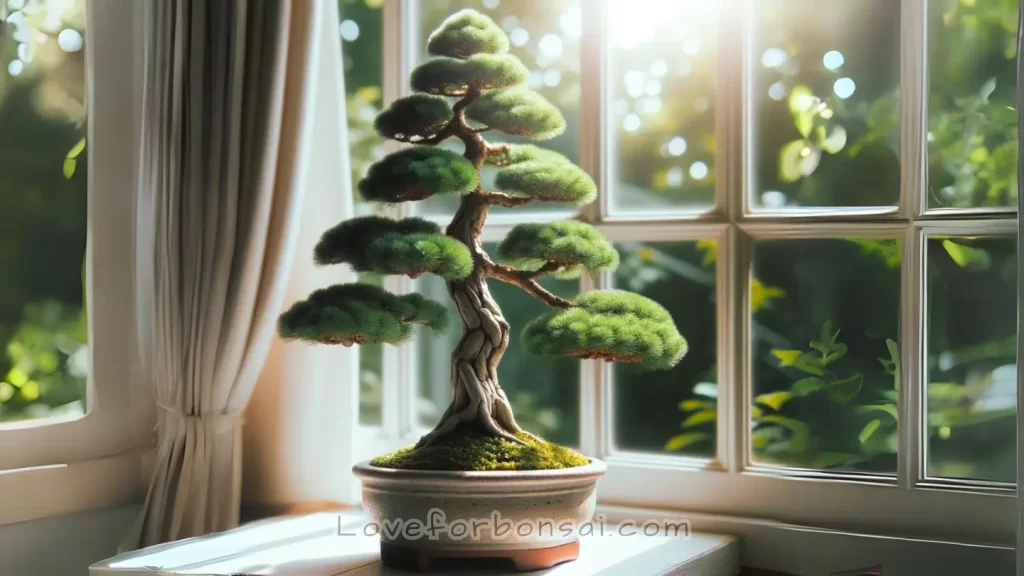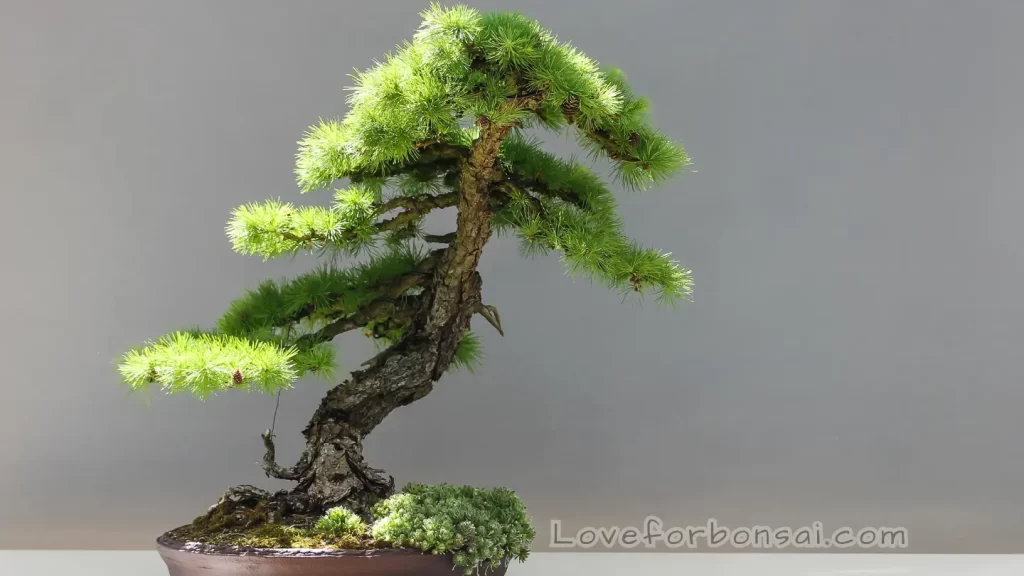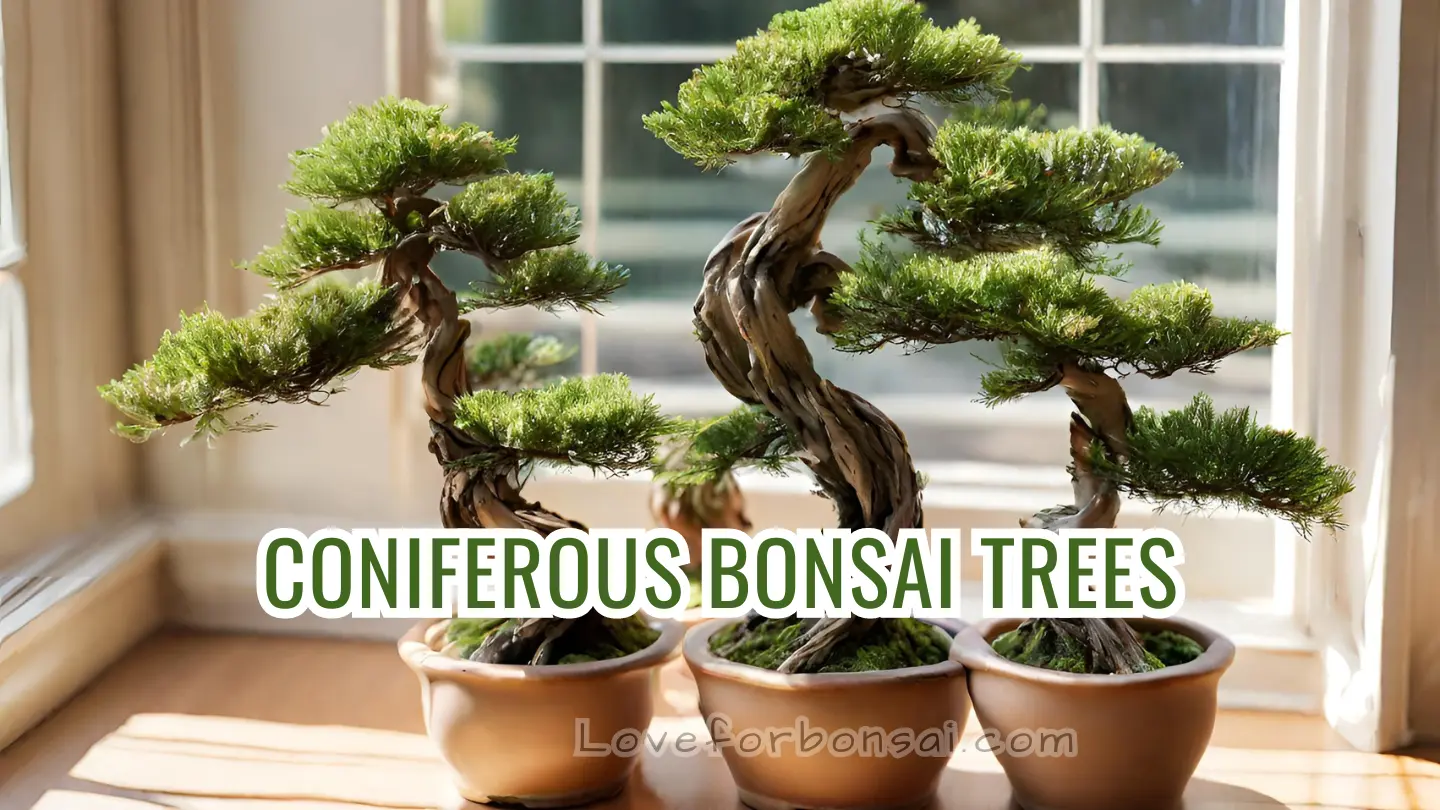Today, we’re gonna talk about one of the most popular and versatile types of bonsai trees out there – coniferous bonsai trees. These trees are known for their evergreen needles and their ability to thrive in a variety of conditions.
As a bonsai grower, this guide will provide you with all the information you need to grow and care for these amazing trees.
What are Coniferous Bonsai Trees?
Coniferous bonsai trees are a type of evergreen tree that is native to the Northern Hemisphere. They are characterized by their needle-like leaves and their ability to produce cones.
They are popular among bonsai enthusiasts because they are relatively easy to care for and can be grown in a variety of climates.
Deciduous Vs Coniferous Trees:
| Deciduous Trees | Coniferous Trees |
|---|---|
| Have broad leaves that shed during autumn. | Have thin needle-like leaves and retain their color through the winter. |
| Produce new leaves when temperatures rise again. | Reproduce through their cones. |
| Include oak, birch, cherry, and maple, among others. | Include pine, fir, and cedar junipers, among others. |
| Are found in warmer regions. | Are found in cold and harsh regions. |
| Have colorful fruits and flowers. | Have cones that produce seeds. |
| Are best suited for informal upright and slanting bonsai styles. | Are best suited for informal upright and slanting bonsai styles. |
How To Care For Deciduous Bonsai Trees
Popular Coniferous Bonsai Trees
Coniferous trees are a favorite choice for bonsai practitioners due to their distinctive foliage and growth patterns. Here are some of the popular coniferous bonsai trees that you can grow at home:

1. Pine (Pinus)
- Pine trees are perhaps the most iconic coniferous bonsai. Their evergreen nature, combined with distinctive needles and bark, make them a popular choice.
- Varieties: Black Pine, White Pine, Scots Pine, Mugo Pine.
- Care: Pines require well-draining soil and regular watering. They also benefit from a winter dormancy period in colder climates.
2. Juniper (Juniperus)
- Junipers are versatile and can be styled in various bonsai forms. Their scale or needle-like foliage and the ability to produce jin (deadwood) make them a favorite among enthusiasts.
- Varieties: Shimpaku Juniper, Common Juniper, Chinese Juniper.
- Care: They prefer full sun and well-draining soil. Junipers should be watered when the soil begins to dry.
3. Spruce (Picea)
- Spruces have short, sharp needles and a pyramidal shape, making them suitable for both formal and informal bonsai styles.
- Varieties: Norway Spruce, Blue Spruce, White Spruce.
- Care: Spruces prefer slightly acidic soil and regular watering. They also benefit from a winter dormancy period.
4. Cypress (Cupressus)
- Cypress trees have soft, feathery foliage and can be styled in various ways, including the windswept style.
- Varieties: Monterey Cypress, Italian Cypress.
- Care: Cypress trees prefer moist, well-draining soil and full sun to partial shade. They should be protected from strong winds.
5. Cedar (Cedrus)
- Cedars have needle-like leaves that can vary in color from green to blue-green. They have a majestic presence and can grow quite large, making them suitable for larger bonsai styles.
- Varieties: Atlas Cedar, Deodar Cedar, Cedar of Lebanon.
- Care: Cedars prefer full sun and require regular watering. They also benefit from occasional misting.
6. Larch (Larix)
- Larch is a deciduous conifer, meaning it sheds its needles in the fall. This unique characteristic offers bonsai practitioners the opportunity to showcase seasonal changes.
- Varieties: European Larch, Japanese Larch, American Larch.
- Care: Larches prefer full sun and well-draining soil. They need regular watering and a winter dormancy period.
7. Hemlock (Tsuga)
- Hemlocks have fine, delicate needles and a graceful growth habit, making them particularly suitable for bonsai. Their branches are flexible, which is ideal for wiring and shaping.
- Varieties: Eastern Hemlock, Western Hemlock, Southern Hemlock.
- Care: Hemlocks prefer a shaded location, especially during the hottest parts of the day. They require well-draining soil and consistent moisture. Avoid letting the soil dry out completely.
8. Yew (Taxus)
- Yews are versatile conifers with dark green needles and reddish bark. They can be styled in almost all traditional bonsai styles and have the added benefit of producing attractive red berries.
- Varieties: English Yew, Japanese Yew, Pacific Yew.
- Care: Yews prefer well-draining soil and can tolerate both sun and partial shade. They are drought-tolerant once established but should be watered regularly when young. Yews are also very responsive to pruning.
9. Arborvitae (Thuja)
- Arborvitae, often referred to as the “Tree of Life,” has scale-like leaves that can vary in color from green to gold. Their compact growth habit makes them suitable for bonsai.
- Varieties: Eastern Arborvitae, Western Redcedar, Oriental Arborvitae.
- Care: Arborvitaes prefer full sun to partial shade. They require regular watering, especially during dry periods. Prune them in the spring to maintain shape.
10. Fir (Abies)
- Overview: Firs are known for their upright growth and symmetrical shape. They have soft needles, typically flat with a clear midrib, and can vary in color from green to silver-blue.
- Varieties: Balsam Fir, Silver Fir, Noble Fir, White Fir.
- Care: Firs prefer slightly acidic, well-draining soil. They should be watered regularly and benefit from a winter dormancy period. Pruning can be done in the early spring to maintain the tree’s shape.
Here is a quick look at the 10 most popular coniferous bonsai trees:
How to Care for Coniferous Bonsai Trees
Coniferous bonsai trees are relatively easy to care for, but they do require some maintenance to keep them healthy and thriving. Here are some tips for caring for your coniferous bonsai tree:

1. Watering
Coniferous bonsai trees prefer well-draining soil and should be watered regularly, but not excessively. Allow the soil to dry out slightly between waterings.
2. Temperature
Coniferous bonsai trees prefer cooler temperatures and should be kept away from direct sunlight. They can tolerate a range of temperatures, but extreme temperatures can cause stress and damage to the tree.
3. Humidity
Coniferous bonsai trees prefer a humid environment, but they can tolerate a range of humidity levels. It’s important to mist your tree regularly to maintain a humid environment.
4. Pruning
Coniferous bonsai trees require regular pruning to maintain their shape and size. Prune your tree regularly to keep it healthy and thriving.
What Are the Best Bonsai Styles For A Coniferous Bonsai Tree?
5. Fertilization
Coniferous bonsai trees benefit from regular fertilization. Use a balanced fertilizer and follow the manufacturer’s instructions for application.
6. Pest Control
Coniferous bonsai trees can be susceptible to pests such as spider mites, mealybugs, and scale. Regularly inspect your tree for signs of pests and treat as needed.
7. Repotting
Coniferous bonsai trees should be repotted every 2-3 years to provide fresh soil and a larger pot. Choose a pot that is slightly larger than the tree’s root system and use a well-draining potting mix.
Conclusion
Coniferous bonsai trees are a great choice for bonsai enthusiasts of all skill levels. With proper care and maintenance, these trees can thrive and provide years of enjoyment. Remember to provide your tree with the right environment, regular pruning, and proper fertilization to keep it healthy and thriving. Happy growing!
Frequently Asked Questions (FAQs)
How often should I water my coniferous bonsai?
The frequency of watering your bonsai trees depends on factors like the species, climate, and pot size. Typically, water when the soil surface feels slightly dry.
What is the best time to prune coniferous bonsai trees?
Early spring is the ideal time for pruning. This allows the tree to recover and grow vigorously during the growing season.
Can I grow coniferous bonsai indoors?
While conifers prefer outdoor conditions, some species can adapt to indoor settings if provided with adequate light and care.
Do I need to repot my coniferous bonsai regularly?
Repotting is necessary every 2-3 years to refresh the soil and maintain the tree’s health. Younger trees may require more frequent repotting.
How can I protect my coniferous bonsai from pests and diseases?
Regularly inspect your bonsai, and if you notice any issues, treat them promptly with appropriate pesticides or natural remedies.
